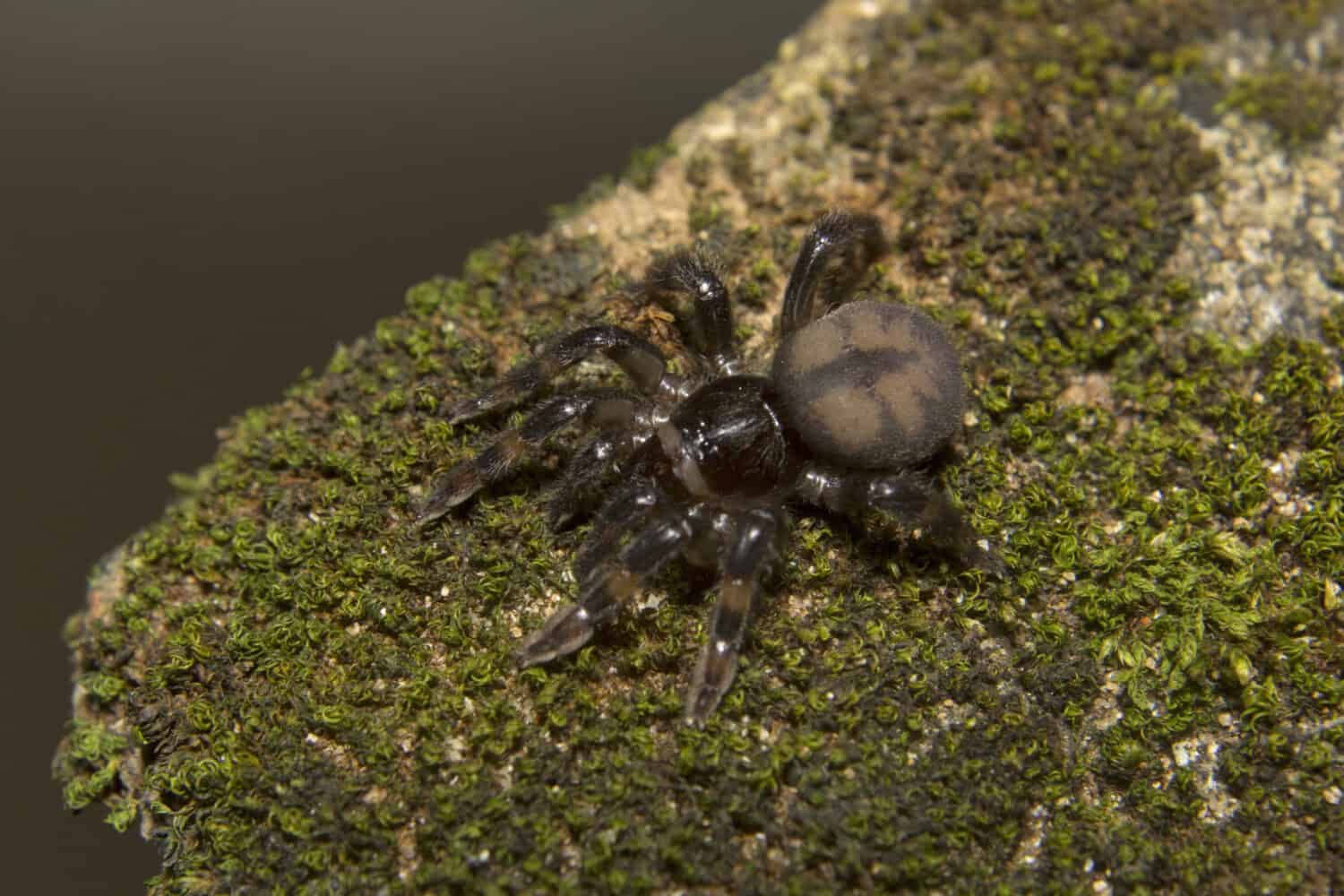It seems like the trapdoor spider has made its way into the news quite a bit lately. However, learning is never frowned upon, and it can be super great to learn about what came before the homosapiens that we know and have become today. This trapdoor spider is unlike any that has been discovered before, and that on its own is pretty exciting.
Australian Trapdoor Spider History
The historically large Australian trapdoor spider fossil is that of a brush-footed trapdoor spider. Not only is it large, but it is the LARGEST Australian trapdoor spider on record. That’s quite an amazing feat since Australia is the largest spider capital of the world. The general population of the world need not be too afraid this time.
The massive spider fossil may be the largest trapdoor spider in Australia at five times the regular size, but the little spider is still very small at only two inches big, including its legspan. This is roughly the size of the common house spiders we are familiar with in the US and UK.
This smallish spider remained underground for almost its entire life unless it were male. In that case, the brave male, once mature, would go out into the wild and unforgiving land in search of a breeding partner, who would be found underground. That willing female could easily end the courting male’s life before or after mating. Any type of male spider does not often live very long.
Meet the Miocene Trapdoor Spider Megamonodontium mccluskyi
A team of Australian researchers led by the Australian Museum and paleontologist Dr. Matthew McCurry of the University of New South Wales tackled the fossil at McGraths Flat, NSW. The McGraths Flat is a prestigious area known by many to be a fossil mecca center. The popularity lies in the type of rock located in the flat. The goethite is a soil mineral that helps form ores, soil, and sediments. It is also part of the makeup of iron rust. The mineral is the most thermodynamically stable iron oxide. This fossil was sandwiched between two slabs and gave the scientists an amazing fossil. The
Dr McCurry said that there have been very few fossil spiders found in Australia, which makes the discovery very significant.
“Only four spider fossils have ever been found throughout the whole continent, which has made it difficult for scientists to understand their evolutionary history. That is why this discovery is so significant; it reveals new information about the extinction of spiders and fills a gap in our understanding of the past.”
“The closest living relative of this fossil now lives in wet forests in Singapore through to Papua New Guinea. This suggests that the group once occupied similar environments in mainland Australia but have subsequently gone extinct as Australia became more arid.”
“Scanning electron microscopy allowed us to study minute details of the claws and setae on the spider’s pedipalps, legs, and the main body. Setae are hair-like structures that can have a range of functions. They can sense chemicals and vibrations, defend the spider against attackers, and even make sounds.”
The First Brush-Footed Trapdoor Spider Fossil Found in the World
The Megamonodontium mccluskyi spider is the fourth spider fossil to be found in Australia and has been officially noted in the Zoological Journal of the Linnean Society. The name of the fossilized spider was named for the person who first found it, Dr Simon McClusky. This fossil just happens to belong to the Barychelidae family, which covers the large brush-footed trapdoor spiders and is the first of its kind ever to be found.
The fossil is dated 11 – 16 million years ago to the Miocene epoch. During this time, the temperature was much like it is today. Australia was a lush jungle filled with an abundance of flora and fauna and was comparable to the Amazon rainforest. The fossil spider’s body size is 23.1 millimeters (.90 inches) which makes it the second largest spider fossil ever found.
Some Other Facts About Trapdoor Spiders

This Barychelidae mygalomorph bark-dwelling trapdoor spider from Thenmala, Kerala, India, is similar to the fossilized
Megamonodontium mccluskyispider.
©RealityImages/Shutterstock.com
- A female trapdoor spider from Australia named Number 16 lived for 43 years in the wild. She was monitored by scientists before succumbing to what they thought was a parasitic wasp. She lived with her mother for 12 years in her burrow before moving into her burrow.
- Not all trapdoor spiders have a burrow with a trapdoor.
- Female trapdoor spiders spend almost their entire lives inside of their burrows.
- Trapdoor spiders make up the largest suborder of Mygalomorphae, which is the order that tarantulas also belong to.
- Not all trapdoor spiders dig tunnels. Some climb into trees and use a funneled leaf as their tunnel home.
- To ensure the tunnel does not cave in, the spiders use mucus-covered mud balls and silk to line the walls.
- When an insect touches the edge of the silk strands coming from the tunnel, the spider will shoot out and grab the insect while quickly retreating back down the tunnel.
- If the insect the spider has caught isn’t an especially tasty one, they will let it go.
- When the males are trying to find a female to mate with, they taste the strands of webbing outside her burrow and then wait for her to come out to see what she’s caught.
The photo featured at the top of this post is © RealityImages/Shutterstock.com
Thank you for reading! Have some feedback for us? Contact the AZ Animals editorial team.







